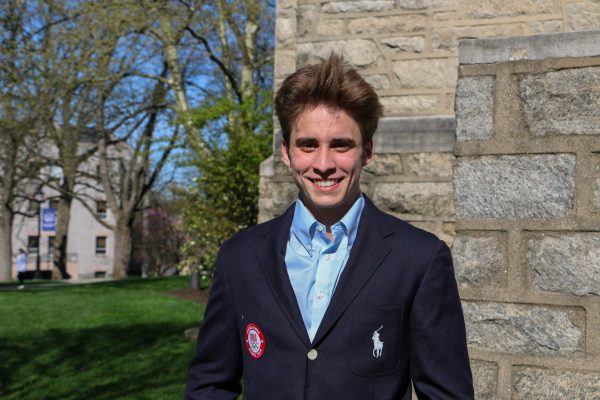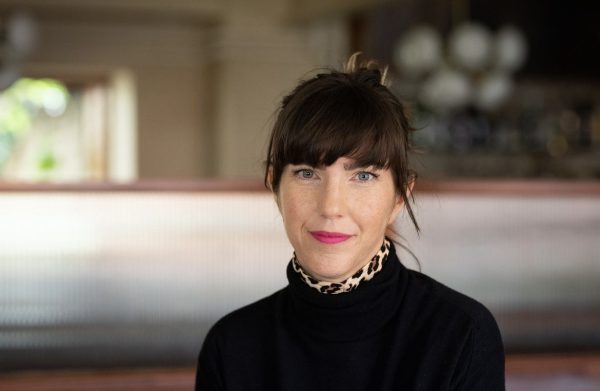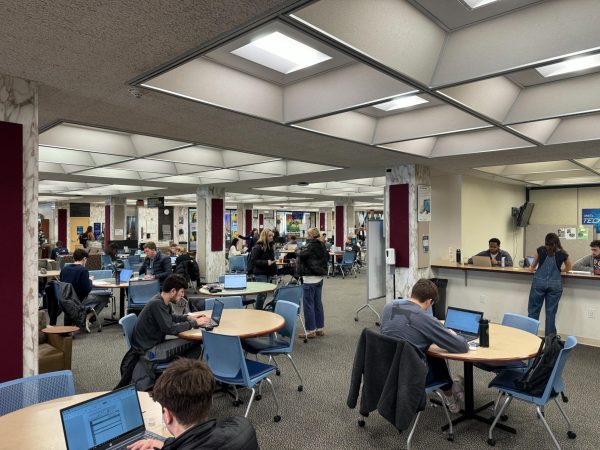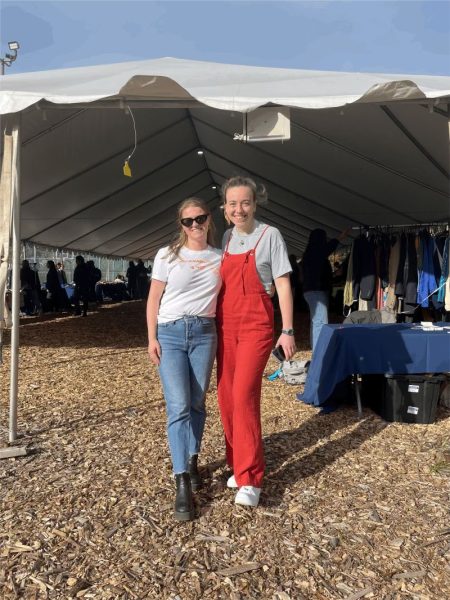When one building advances, another falls behind: Father Peter and students discuss classroom facilities on campus
April 30, 2015
Twenty-five business students meet for class in Bartley room 2065. They sit in flexible black plastic chairs, at rows of desks equipped with enough outlets for each student. Sunshine reflects into the classroom through rows of crystal clear windows that encompass the left wall of the room. Their professor sits at a swivel chair in the front of the room, lecturing from a podium branded with the logo, “Villanova School of Business.” Behind him against the back wall rests a clean white board ready to be written on.
Roughly one mile across campus, 25 Liberal Arts students meet for class in Tolentine Hall room 206. They sit at small grey individual desks with straight plastic, off-white backs. Some of the desks rock as the students sit due to the desks’ uneven legs. Sunshine peaks through the foggy windows reflecting dust on the chipping tile floor. The professor sits at a similarly grey desk, a bit larger than the students’ desks. Behind him rests a scratched black chalkboard, ready to be written on.
As certain buildings on the University’s campus continue to make strides in up-to-date construction and advancement, others seem to remain untouched and in their original conditions.
Tolentine Hall, named after St. Nicolas of Tolentine, was constructed in 1927 and has served the University as a center for academic and administrative purposes. Today, it is the home of various Liberal Arts and Humanities classes.
Despite its gothic exterior and historic significance, Liberal Arts students are often frustrated by the conditions of the building where they reluctantly spend the majority of their days.
“Most of my classes have been in Tolentine,” commented Junior English Major Mary Kate Fields. “The building is very outdated in every sense of the word. The classroom resources are well behind those in nicer buildings on campus and it still puzzles me how the academic building home to the most students has McDonalds-style single stall bathrooms.”
Students in the other colleges on campus have commented on the conditions in Tolentine as well.
“Tolentine just seems like an old high school,” senior finance major Michael Clark said. “There is low-quality air conditioning and heat, as well as outdated desks and chalk boards.”
The need to renovate the building has not gone unnoticed by the University’s administration. “I would love to redo Tolentine Hall, because the building really needs it,” said University President Rev. Peter Donahue, O.S.A. “The classroom conditions are just terrible.”
When asked about the conditions of Tolentine Hall, Adele Lindenmeyer, Dean of the College of Liberal Arts and Sciences, stated that the building is, “Not something that we put on the tour for prospective students.”
However, reconstruction of the building would require construction that would cost up to $100 million and would take approximately two years to complete. The University faces the challenge of funding such a project, as well as finding a space to house all the classes that go on there every day, Donahue mentioned.
Deciding what facilities on campus will be renovated first is not always a simple process. Often, certain projects gain the University’s attention and funding because resources are available to complete that project at that given time, while other buildings, despite their age and condition, are left for future renovations, Donahue explained.
“It really comes down to a donor’s desire,” he said. “If someone gives us money to complete a particular project, then that is where their money goes. Recently a donor has surfaced who would like to renovate the Bartley Exchange. And another group of donors are interested in renovating athletic facilities. I could think of a lot more things than to update the physical fitness center, but of course, we will take it.”
Bartley Hall, the home of the Villanova School of Business, is equipped with technological and renovated spaces that provide students with a positive environment to attend class. Complete with over ten flat screen television screens throughout the building, a new finance lab, and renovated glass paneled study rooms and offices, the building is a popular place for students of all majors to congregate, especially in the Bartley Exchange.
However, unlike students in the College of Business, Nursing or Engineering, the 3,500 students enrolled in the College of Liberal Arts and Sciences do not have one particular building or meeting place to call home.
“I think the people that suffer the most are the liberal arts students in a lot of aspects,” Donahue stated. “The quality of classrooms definitely need to be increased and if you look at facilities I think the humanities are hurting the most. But this was not necessarily always the case. ”
Driscoll Hall, the home of the College of Nursing, was built in 2008 after constant requests for new facilities were requested. Today, it serves as one of the most advanced and beloved buildings on campus.
“Driscoll is my favorite building on campus,” Clark said. “It has the nicest lecture halls, foyer and entrance yard in my opinion.”
Mendel Hall, constructed in 1968, serves as the University’s major setting in the fields of science and research, has recently come to the forefront as a need for renovation.
“There are things in that building that could create hazardous situations if they remain unchecked,” Donahue said. “We really need to take care of these issues and take care of Mendel the way that it needs to be fixed.”
The differing quality of facilities on campus could be attributed to varying needs of each field of study. “Each of the buildings on campus have such different purposes I don’t really think that it is possible to compare them,” Lindenmeyer said. “A Biology lab is different than an engineering lab and the students in those respective fields have different needs.”
Recently, the College of Liberal Arts and Sciences has updated Garey Hall, the home of the Communications Department.
Despite these advancements, some students still feel as though these new facilities are not enough in comparison to their counterparts on campus.
“I really dislike Garey,” junior communication major Caroline Brooks said. “People tend to think of it as the Communication Building but there are about five other departments crammed in to the building. It’s very bland–the colors are dull, the rooms are uncomfortable and the classrooms are all different. The one thing they all have in common is that they’re uncomfortable.”
When asked if they would choose to study in the buildings they attend class, students in the College of Liberal Arts and Sciences responded negatively.
“I do most of my work in Bartley or Connelly’s Presidents Lounge,” Fields said. “I would not go out of my way to study in uncomfortable rooms with cockroaches and limited Wi-Fi access.”
Similarly, Brooks stated, “I tend to study in Bartley. I would pretty much never do work in Tolentine, Mendel or John Barry. The buildings I attend class in are just so uninviting, uncomfortable, closed off and impersonal.”
Donahue expressed his desire to create a new building on campus that would serve as a center for the Humanities near Driscoll Hall.
“Of course, that would be down the road,” he said. “Maybe some other president’s job.”











